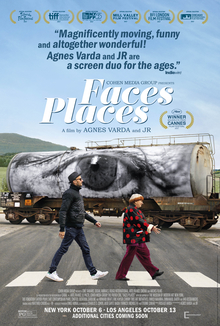Documentaries That Stage Reality
Today we’ll look at master documentary directors who create “stages” on which real-life characters tell true stories. I hope these examples will inspire you to recast the talking-head doc into new forms.
Quick announcement: we have an award-winning documentary editor available April 30th. Email me to learn more about this opportunity.
First up is Swedish Director Marcus Lindeen, whose film The Raft won Best Documentary at CPH-DOX last month. As in his previous documentary Regretters (2009)–“both a theater play and a documentary”–Lindeen literally built a stage on which characters could recall their harrowing saga.
As Lindeen told Filmmaker Magazine, he starts “with documentary elements and add(s) artificiality or theatricality to see what comes out. For me as a director, working in this obviously artificial way in a black box studio opens up a whole other toolbox.”
For The Raft, a story about a 1973 trans-Atlantic expedition, Lindeen’s team built a precise replica of the original raft. He then found and flew eleven participants into his Swedish studio to tell a tale that smashed gender stereotypes.
When the clapper came down, the characters performed “much more than they would if you would just follow them around in their daily lives,” he told journalist Pamela Cohn.
Now, imagine directing a road-trip documentary. What could you do other than travel around and interview people? In the endearing, Oscar-nominated Faces Places, 89-year-old Agnes Varda teams up with photographer JR to explore Southern France.
Their conceptual gimmick? JR’s photo truck creates epic-sized portraits of locals. These faces are mounted on houses, barns and trains. And the resulting interactions create a priceless, regional portrait of humanity.
Conceptual documentaries employ fictional techniques, not just by adapting screenwriting techniques in post-production (for which New Doc Editing is known), but when shooting. “The boundaries between these two genres are porous,” Vardas has said. “One must feel a documentaristic texture in fiction and create characters in documentaries.”
One final stunning example of blending fiction and documentary is Joshua Oppenheimer’s Oscar-nominated The Act of Killing (2012).
How do you get a war lord to open up about his atrocities? Invite him to reenact his mass-killings in whichever movie genre he chooses, “including classic Hollywood crime scenarios and lavish musical numbers,” according to IMDb.
Now that’s thinking outside the box to stage reality.
